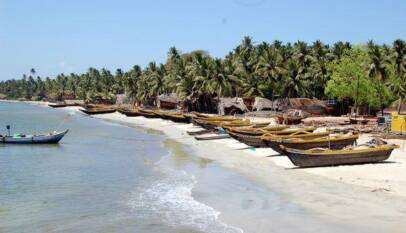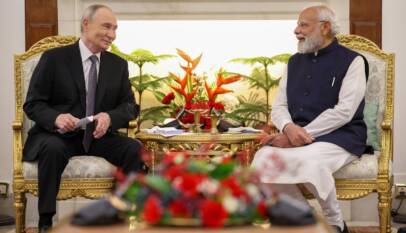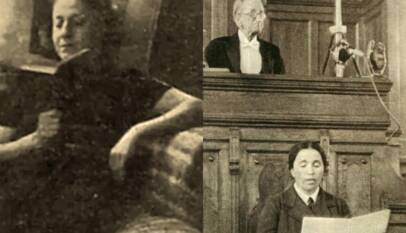Goen Tshephu Ney: Bhutan’s Sacred Cave of Serenity and Spiritual Wonders
A Hidden Gem in Punakha Now Accessible to Travelers; Discover Bhutan’s Sacred Sites, Hot Springs, and Himalayan Peace
Nestled deep within the Goenshari Gewog of Punakha, Bhutan, lies a spiritual retreat that has begun captivating hearts far and wide — Goen Tshephu Ney, a sacred cave blessed by the legendary Guru Rinpoche. What was once a hidden destination, known only to devoted locals, is now accessible to pilgrims and travelers alike thanks to improved roads. A visit here is more than a journey; it is a soul-stirring experience where myth, meditation, and nature converge.

The Journey to the Sacred Cave
Located approximately two hours from Thimphu and just 1.5 hours through scenic winding roads from Punakha, Goen Tshephu Ney is now reachable via a blacktopped road completed a few years ago. The trail leading to the Ney meanders through lush forests and tranquil villages, offering glimpses of Bhutan’s raw beauty at every turn.
The drive to the cave, once difficult and known only to a few, has now become a scenic and serene ride for nature lovers and pilgrims. With roads stretching nearly to the temple base, visitors can enjoy a stress-free and comfortable approach to a site once reachable only by foot.
The Growing Popularity of Goen Tshephu Ney
In earlier years, only a few spiritual seekers would find their way to the Ney, mainly during highly auspicious dates or on pilgrimage. However, improved accessibility has now drawn in a new wave of visitors — both Bhutanese and foreign. The site is particularly revered during religious festivals, when pilgrims visit not just for blessings but to connect with the energy and legends that surround this sacred place.

As word spreads about Goen Tshephu Ney’s spiritual aura and historical significance, more Bhutanese families are including it in their pilgrimage circuits, alongside major sites like Taktsang (Tiger’s Nest) and Bumthang’s temples. The site’s tranquility, cultural depth, and scenic backdrop make it a standout destination in the Punakha region.
The Legend of Guru Rinpoche
Steeped in Bhutanese mythology, Goen Tshephu Ney is intimately tied to Guru Rinpoche (Padmasambhava), revered as the Second Buddha. After meditating at Maratika in Nepal, he is believed to have visited this cave and witnessed Amitayus, the Buddha of Long Life. This site is considered the third Maratika, offering the same blessings without needing to travel to Nepal.
According to oral legends, Guru Rinpoche arrived here after taming spirits and meditating in Nepal, and it is at Goen Tshephu where he visualized Amitayus in full form. As such, the cave is often visited by those seeking longevity, healing, and karmic cleansing. Locals believe that merely stepping onto the sacred ground here brings immense spiritual merit.
Sacred Sites Within Goen Tshephu Ney
Visitors are greeted by an expansive space surrounding the Ney. A cemented pathway guides pilgrims and tourists alike to numerous sacred sites:
- Guru Rinpoche’s Self-Spoken Statue: The monastery’s focal point, believed to embody the living speech of the Guru.
- Three Footprints of Guru Rinpoche: Symbolizing his departure to Tshechudra, Gasa, these impressions are revered for their miraculous origin.
- Tara Cave: Said to contain 21 self-manifested Tara images. A flashlight is required to view the sacred imprints inside this dimly-lit cave.
- Dakini Meditation Cave: A small, elevated cave accessed via a sturdy iron ladder. Inside, the energy is said to be deeply transformative, ideal for intense meditation.
- The Cooking Oven: A rock formation shaped like an oven, where it is believed that the Dakinis once prepared meals for the Guru.
- Self-Arisen Letters and Mantras: Etched naturally into rocks, these inscriptions are said to be manifestations of sacred syllables.
- Male and Female Conch Shells: Representing harmony and spiritual awakening, these naturally shaped shells are found near the butter lamp room.
These relics turn Goen Tshephu into a live museum of Bhutanese Buddhist mysticism — making each visit spiritually fulfilling.
Goen Tshephu Ney Nearby Attractions
- Koma Tshachu: A revered hot spring known for healing properties. Believed to be blessed by Guru Rinpoche himself, Koma Tshachu is one of Bhutan’s oldest springs.
- Punakha Dzong: Often called the Palace of Great Bliss, this 17th-century fortress is a masterpiece of Bhutanese architecture.
- Chimi Lhakhang: The Temple of Fertility, built in honor of Lama Drukpa Kunley, attracts couples hoping to conceive.
- Talo Monastery: Perched above Punakha at 2800 meters, this peaceful retreat is surrounded by rhododendron forests.
- Chubu Tshachu: Another famed hot spring believed to cure chronic illnesses.
- Kabji-Hoka Tsho: A sacred lake reached via a moderate trek. Its story of divine intervention to stop flooding is still told by locals.
- Punakha Suspension Bridge: At 180 meters long, it offers panoramic views of the Pho Chhu River and lush valleys.
- Khamsum Yulley Namgyal Chorten: Built to dispel evil and promote world peace, this hilltop stupa rewards hikers with breathtaking views.
Best Time to Visit Goen Tshephu Ney
The best seasons to plan a trip are spring (March to May) and autumn (September to November). Summer, though green and lively, brings unpredictable rain, while winter snow can block roads. During spring, the region comes alive with blossoms, while autumn offers crisp skies and pleasant trekking conditions.
How to Reach Goen Tshephu Ney from Major Indian Cities
From Mumbai:
- Flight: Take a flight to Bagdogra Airport (IXB) or Paro International Airport (via connecting flights). From Bagdogra, proceed to Phuentsholing by road (4–5 hrs). From there, travel via Thimphu to Punakha, and onward to Goen Tshephu.
- Train + Road: Mumbai to New Jalpaiguri (NJP) via train, then road journey via Jaigaon/Phuentsholing into Bhutan.
From Delhi:
- Direct Flight: Fly to Paro International Airport. Then a 2-hour drive to Thimphu, and 2 more to Punakha.
- Via Bagdogra: Fly to Bagdogra and proceed by road.
From Bangalore:
- Flight: Travel via Kolkata or Delhi to reach Paro. From Paro, drive to Thimphu and onward to Punakha.
- Alternate: Reach Bagdogra, and travel via Phuentsholing into Bhutan.
Indian nationals can enter Bhutan with a valid passport or voter ID. Permits are required and can be processed at Phuentsholing or online for Paro airport arrivals.
Final Thoughts: A Journey Beyond the Physical
Goen Tshephu Ney is a rare blend of ancient spiritual energy, natural beauty, and Himalayan mystique. Whether you’re a pilgrim, a traveler, or a seeker of peace, this sacred cave promises more than just breathtaking views — it offers deep personal transformation.
In a country where spirituality breathes through every forest and prayer flag, Goen Tshephu Ney stands out as a symbol of sacred continuity. Come here not just to witness a holy site, but to find what the soul might be quietly yearning for: stillness, purpose, and connection.
Team Maverick
Putin Praises Modi’s Role in Ukraine Peace Efforts, Says India-Russia Ties Built on Deep Trust and Strategic Vision
New Delhi, Dec 2025 : Russian President Vladimir Putin on Friday publicly acknowledged and…




















